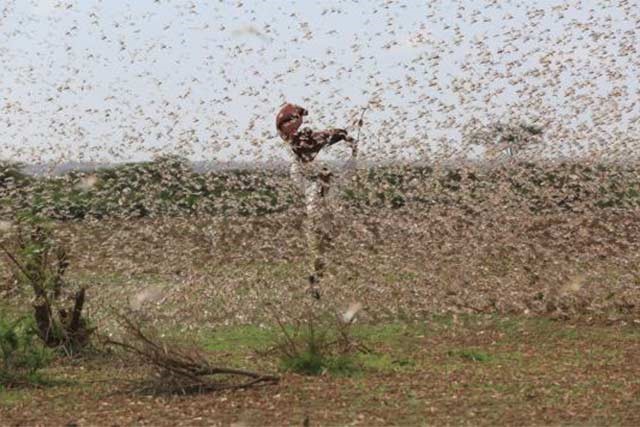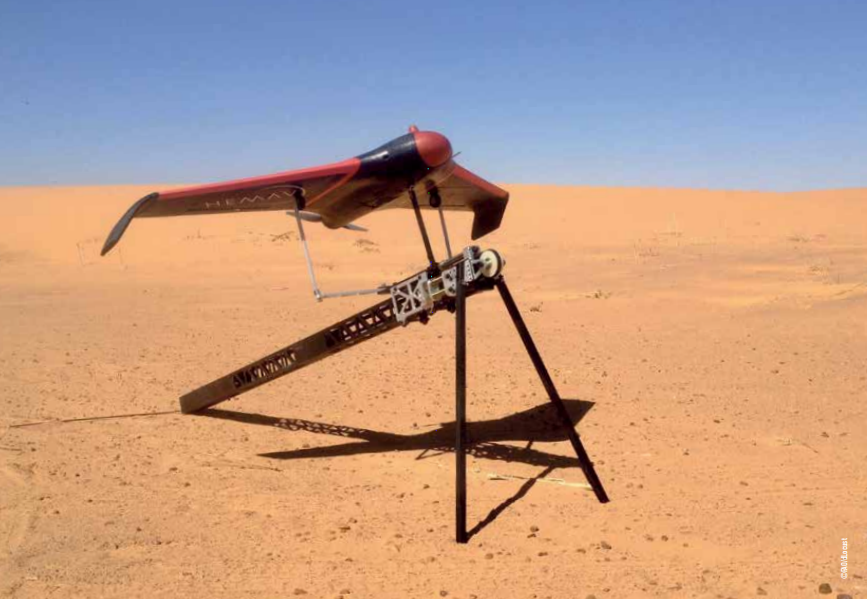2025 Year in Review
In 2025, science, innovation, and collaboration came together to deliver real impact for people and…
Seven East African countries have been plagued by a deadly desert locust invasion exposing the already “severely food insecure” region to a possible humanitarian crisis. This is the worst invasion in the region in the last 25 years and the Food and Agriculture Organization of the United Nations (FAO) is appealing to donors to raise $76 million to control the invasion. The $76 million only represents the amount required to control the pest and does not account for harvest losses and other impacts. If not well managed, the figure could multiply. Between 2003 and 2005, the world experienced a major locust plague that cost more than half a billion dollars to control and more than $2.5 billion in harvest losses.
 The desert locust is the most destructive of all food-eating locust species and has the capacity to eat as much food in a day as 84 million people (FAO). In addition to posing a serious food security threat and placing a huge financial burden on already struggling economies, locust invasions have other impacts. The huge amounts of pesticides used for control have environmental impacts. Over 13 million litres of pesticide were used to control the invasion from 2003 – 2005. Millions of people lost their livelihoods in the wake of the invasion. A less addressed impact of these invasions is the link to outbreaks of “epidemics of human pathogens, such as cholera (because of the massive quantities of decomposing locust cadavers that would accumulate on beaches after swarms flew out to see and drowned). The stats on the current invasion in East Africa have not been confirmed but it has been projected that the invasion which started in December 2019 could continue up to June 2020. The locusts, already in the hundreds of billions, could multiply up to 500 times by June and pose a humanitarian crisis that may get out of control. With the current control efforts seriously under-resourced (only $21 million raised so far), only time will tell the extent of the damage.
The desert locust is the most destructive of all food-eating locust species and has the capacity to eat as much food in a day as 84 million people (FAO). In addition to posing a serious food security threat and placing a huge financial burden on already struggling economies, locust invasions have other impacts. The huge amounts of pesticides used for control have environmental impacts. Over 13 million litres of pesticide were used to control the invasion from 2003 – 2005. Millions of people lost their livelihoods in the wake of the invasion. A less addressed impact of these invasions is the link to outbreaks of “epidemics of human pathogens, such as cholera (because of the massive quantities of decomposing locust cadavers that would accumulate on beaches after swarms flew out to see and drowned). The stats on the current invasion in East Africa have not been confirmed but it has been projected that the invasion which started in December 2019 could continue up to June 2020. The locusts, already in the hundreds of billions, could multiply up to 500 times by June and pose a humanitarian crisis that may get out of control. With the current control efforts seriously under-resourced (only $21 million raised so far), only time will tell the extent of the damage.
Scaling up control efforts is paramount to combating the plague before it escalates to a full-blown humanitarian crisis. In Kenya, scientists are calling for the use of advanced technology, specifically drones, to contain the spread of the invasion, noting that the aircrafts currently being used for aerial spraying are overwhelmed. Furthermore, they are concerned that the aircrafts are not able to access deep valleys and mountain contours that may be infested with the locusts.
The potential of drone technology in desert locust control has been under investigation by FAO and its partners and the dLOCUST is one of the drone technologies currently under research and development by FAO. This drone solution is expected to overcome some of the challenges of the current surveillance systems and will be integrated with current survey activities to:
 Last month (January 26-31), Mauritania conducted a second round of tests to “confirm the durability and adaptability of drones in different desert conditions” (BBC News). In 2016, FAO’s West Africa joint locust control was established and in 2018 $1.5 million was allocated to prevent locust damage in the region. The first drone tests were carried out in 2018. Earlier on in 2016, FAO partnered with HEMAV, a civil society drone technology company, “to integrate drone technology in locust prevention and treatment” (The National). The four-year development plan culminated in the dispatch of drones to 30 countries.
Last month (January 26-31), Mauritania conducted a second round of tests to “confirm the durability and adaptability of drones in different desert conditions” (BBC News). In 2016, FAO’s West Africa joint locust control was established and in 2018 $1.5 million was allocated to prevent locust damage in the region. The first drone tests were carried out in 2018. Earlier on in 2016, FAO partnered with HEMAV, a civil society drone technology company, “to integrate drone technology in locust prevention and treatment” (The National). The four-year development plan culminated in the dispatch of drones to 30 countries.
FAO’s Desert Locust Control Committee (DLCC) was established in 1955 following a 12 year desert locust plague and is the primary forum that brings together locust-affected countries, donors and other agencies to discuss Desert Locust management under the FAO umbrella. The Desert Locust Information Service is headquartered at FAO in Rome and is the focal point for all locust and locust-related information that is necessary to operate an early warning system for Desert Locust plagues. DLIS produces monthly situation summaries and forecasts for each country and sends warnings and alerts about potential invasions or other significant developments.